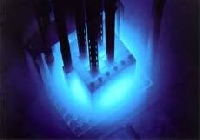
Facts about energy cover a huge subject area: here a few to spark your interest!
Simply put, energy is the capacity of a system to perform work. Energy exists in many forms and can be applied to virtually any object, particle, or system.
Here are some interesting facts about energy:
– The concept of energy was initially proposed as ?vis visa? by German mathematicians, philosopher, and physicist Gottfried Liebniz. The term ?Kinetic Energy? was coined in 1829 by Gustave-Gaspard Coriolis, and ?Potential Energy? was coined in 1853 by William Rankine. These theories, along with Newton?s theory of conservation of momentum were combined by William Thomson (Lord Kelvin) as the laws of thermodynamics.
– Energy exists in one of two types: Kinetic (working) energy, or Potential (stored) energy. Think of energy in motion (such as a rolling pool ball) as kinetic, and resting energy (such as that stored by your body for future use) as potential.
– Energy comes in many different forms: Thermal (heat), radiant (light), kinetic (motion), electrical, chemical, nuclear, gravitational, solar, electromagnetic & elastic are just a few. Any form of energy can be transferred into another form of energy.
~
– The conservation law of energy states that the amount of energy in a system will always remain constant. If energy disappears, it will appear in another form. Another way of stating this is that we do not ?create? energy when we use it, we simply transfer it from another form– energy is neither created or destroyed.
– In most cases energy can be transformed from one form to another with good efficiency. One exception to this rule is with thermal energy. Often thermal energy reactions result in the release of potential energy. In concept, a perfectly energy-efficient system would put convert all energy input to useful work, but this rarely possible in real applications. Think of the human body as an example: Because the body is unable to transform energy into work with perfect efficiency, most stored energy is lost as heat during exercise.
– The most commonly used unit to measure energy is the Joule (J).
– When comparing different types of fuel, the BTU (British Thermal Unit) is often used. The BTU is a measure of the heat content of a fuel.
– Energy sources can be classified as either renewable or non-renewable. Renewable energy comes from a source that can be easily replenished (such as wind), while non-renewable energy comes from a finite resource (such as coal).
-Non-renewable energy sources account for about 90% of all energy used in the United States.
– The most common source of energy in the United States is petroleum. Together petroleum, natural gas, and coal (all non-renewable sources) generate about 85% of America?s energy.

